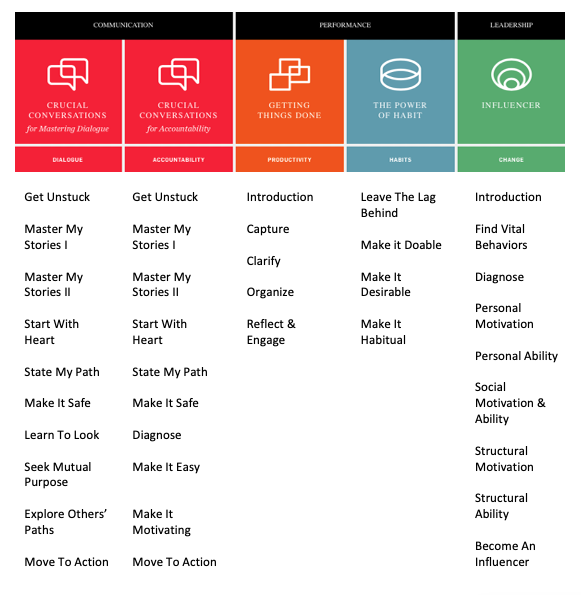As a Learning and Development professional, you empower employees and teams far beyond what a mere training catalog can offer. The courses and experiences you create, curate, and provide help individuals align their goals with those of the company and give them opportunities to grow at every career stage.
Many organizations use competencies as a means of measuring performance and development. Tying these competencies to your L&D offerings is a great way for employees and leaders to better understand how these courses and resources contribute to individual and organizational success.
WHAT IS COMPETENCY MAPPING?
Competency mapping is the process of determining what specific competencies—skills, behaviors, abilities, and knowledge—a role requires, according to an Indeed.com article on the topic. This process allows employers to first understand their workforce from both individual and organizational perspectives, and then to make more informed decisions about employee development, hiring, training, and career development in a way that supports both employee and company success.
Competency mapping can help you:
- Better understand your employees’ current strengths and weaknesses and set them up for success.
- Improve productivity by helping employees focus their talents on their most relevant tasks.
- Streamline your hiring process with clear job descriptions and applicant screening.
Summed up, competency mapping brings clarity to you and your organization—and demonstrates your value—in a way that benefits everyone.
HOW DO L&D LEADERS/PROFESSIONALS USE COMPETENCIES?
Once organizations get clear on the competencies they want, they can then align talent with those and create plans to fill any talent gaps. It’s important to consider the roles competencies play in everything from performance to development. While there are literally hundreds of competencies, we reviewed dozens of models and identified six of the most common:
- Leadership and management
- Communication and interpersonal skills
- Teamwork and collaboration
- Self-direction and professionalism
- Critical thinking and creativity
- Change management
Creating development plans for current employees is one way to integrate competencies into an employee’s journey. To meet these development needs, leaders and employees look for courses, resources, and activities to assist. That’s where your Crucial Learning courses come into play!
HOW DO YOU CONNECT CONTENT TO A COMPETENCY?
If you can show how your Crucial Learning courses help employees develop and improve competencies your organization values, you help solve a problem and demonstrate the value of your courses and services.
To connect content to a competency, first determine the competencies you want to work with, along with descriptions of each. What does that competency look like within your organization? You may want to include all of your competencies, or you may choose a select few competencies that you and a group leader have recognized as an area of development.
Next, create a list of the lessons, modules, and/or skills from each Crucial Learning course you offer (or want to offer) as part of the solution or strategy. Below is a comprehensive list I created and use when mapping competencies with clients.

Now it’s time to use your knowledge of Crucial Learning courses to tie the two lists together. While you may see multiple connections from course lessons to a competency, choose only a few for each. Your goal is not to create every possible connection but to showcase how even one to two skills within a Crucial Learning course build and support your organization’s competencies. This will help highlight how the competency can be learned and developed.
Let’s look at an example of two common competencies used by organizations (Communication and Critical Thinking) that have been mapped to Crucial Learning course content.

WHY THIS MATTERS
As you facilitate, show learners how the course skills relate to organizational competencies and their performance. This clarity can help motivate them to develop the skills and knowledge they need to excel.
Mapping competencies to course skills is an invaluable strategy for employee development. It helps both leaders and employees bring their best to the workplace. By mapping competencies, you can help employees and leaders understand their specific responsibilities and develop their individual strengths so that they may further contribute to the success of the team and organization.
For more on competency mapping and Crucial Learning courses, check out our free eBook, The Leader’s Guide to Building Employee Competency: Solutions to Develop a High-Performance Workforce.
Want help mapping your organizational competencies to the skills taught in our courses? Contact us and schedule time with a Solutions Implementation Consultant.








